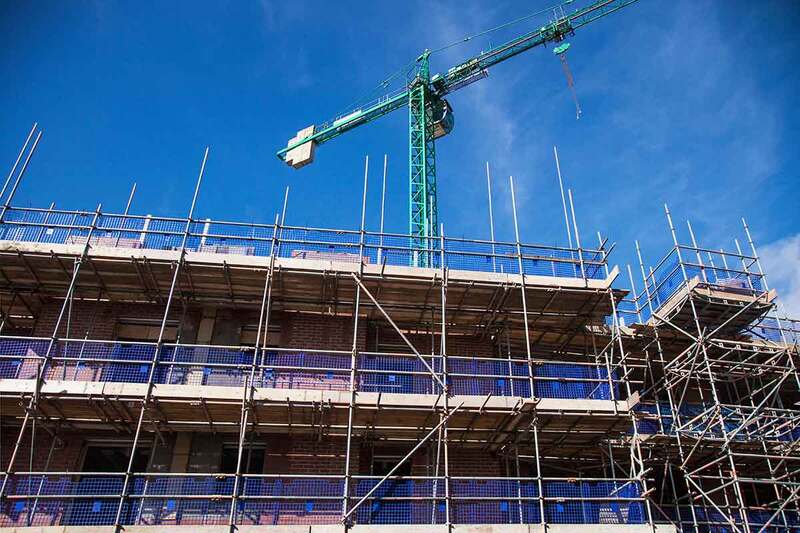You are viewing 1 of your 1 free articles
What house builders need in the government’s next 100 days
House builders are excited to deliver the government’s ambitions for new homes, but we need support, writes Steve Cresswell, chief executive of Chartway Partnerships Group
The new government has pledged to build 1.5 million new homes over the next five years, and the action taken so far has been encouraging.
The King’s Speech promised planning reform to get Britain building, and the new housing secretary has been quick off the mark to announce bold measures, including reinstating mandatory housing targets for England and making it easier to build on ‘grey belt’ land.
The measures announced so far have primarily been focused on the supply side. If we are to achieve the ambitious new-homes target, the government must also stimulate demand. What happens in the next 100 days will be key.
As a large small and medium-sized enterprise (SME) multi-tenure house builder, we have worked with housing associations for 15 years, and we understand the pressures and obstacles that stand in the way of swift delivery.
The following suggestions are ideas for what we could do collectively to get on with building the homes Britain needs.
Give councils the proper guidance and resources
The government’s plan to establish mandatory housing targets for local authorities, along with a standardised method for calculating housing need, is crucial. But if these targets are to translate into actual homes, local councils need clear guidance and resources to help them develop robust local plans.
The upcoming Autumn Budget is a good opportunity to provide additional funding for local planning departments, so they can enhance their capacity and speed up decision-making. They should be encouraged to adopt digital planning tools that streamline application processes, reduce paperwork and accelerate approvals.
Implementing a national scheme of delegation for planning committees will inevitably cut delays and drive certainty on positive outcomes of high-quality schemes.
Immediate guidelines to identify and recategorise grey belt land
The reclassification of certain green belt areas to grey belt presents a significant opportunity to unlock new housing sites. Now, the government should issue guidelines on how local authorities can identify and recategorise grey belt land. This will help streamline planning applications and reduce bureaucratic delays.
Once these guidelines are set, local authorities should prioritise conducting new audits of their land holdings and work with developers to unlock these sites for new projects. Public-private partnerships will play a crucial role in transforming underused land into vibrant, sustainable communities.
Prioritise stimulating the residential market
While it is positive that we have finally had the first interest rate cut, to 5%, in August, we are going to need to see further rate reductions this year if we are to stimulate the residential markets and achieve the overall housing delivery targets for 2025.
Not much was said about Stamp Duty Land Tax (SDLT) in Labour’s manifesto, apart from the pledge to increase its rate by 1% for overseas nationals buying UK residential property. SDLT receipts in the UK amounted to over £11bn in 2023-24, so it is very unlikely we will see the back of this tax.
However, the government has an opportunity to stimulate the wider market in its Autumn Budget, especially for first-time buyers, by increasing its threshold. The Conservatives raised the threshold to £425,000 in 2022, but this is set to fall back to £300,000. Increasing it above £425,000 and making this permanent, combined with lower interest rates and mortgage deposit and guarantee schemes, can have a positive effect on stimulating the residential market.
This will be essential to drive reinvestment in the acquisition of new mixed-tenure development sites, especially for SME developers.
Accelerate delivery of affordable and sustainable homes through funding
We need more diverse and inclusive housing developments. The requirement to deliver First Homes should be removed and there should instead be a focus on multi-tenure sites, with an emphasis on affordable homes.
October’s Budget is a great opportunity to review grant funding for affordable homes. Local authorities should offer incentives, such as expedited processing, for projects that include a high percentage of affordable new homes, as well an emphasis on homes with an Energy Performance Certificate rating of Band A, and properties using timber frames and modern methods of construction.
Clarity on rent controls
The government should clarify its position on rent controls. In the run-up to the election, the now chancellor seemed to suggest there may be a case for controls in some areas. However, the party has stressed that this is not a national policy. Controls on rents are a major blocker to the affordability and viability of mixed-tenure sites overall.
Of course, if we are to successfully deliver 1.5 million homes over the next parliament, the government needs to announce a proper plan to train more people, along with the investment to make it happen.
On a local level, we need strong partnerships between local authorities, developers and housing associations. Importantly, these partnerships must engage local people early in the planning process, whether through public consultations, open houses or leveraging social media.
Steve Cresswell, chief executive, Chartway Partnerships Group
Sign up for our development and finance newsletter
Already have an account? Click here to manage your newsletters
Sign up to the Social Housing Annual Conference 2024
The two questions of whether to invest funds in revitalising existing stock or in the development of new affordable homes, and how to raise social housing investment, are inextricably linked.
That is why the Social Housing Annual Conference is now running alongside the Inside Housing Development and Regeneration Summit, giving you the opportunity to gather comprehensive insights to inform your key strategic decisions in just one day.
Join 600 senior leaders with a common vision of funding and delivering quality, affordable homes and places for tenants and residents.














